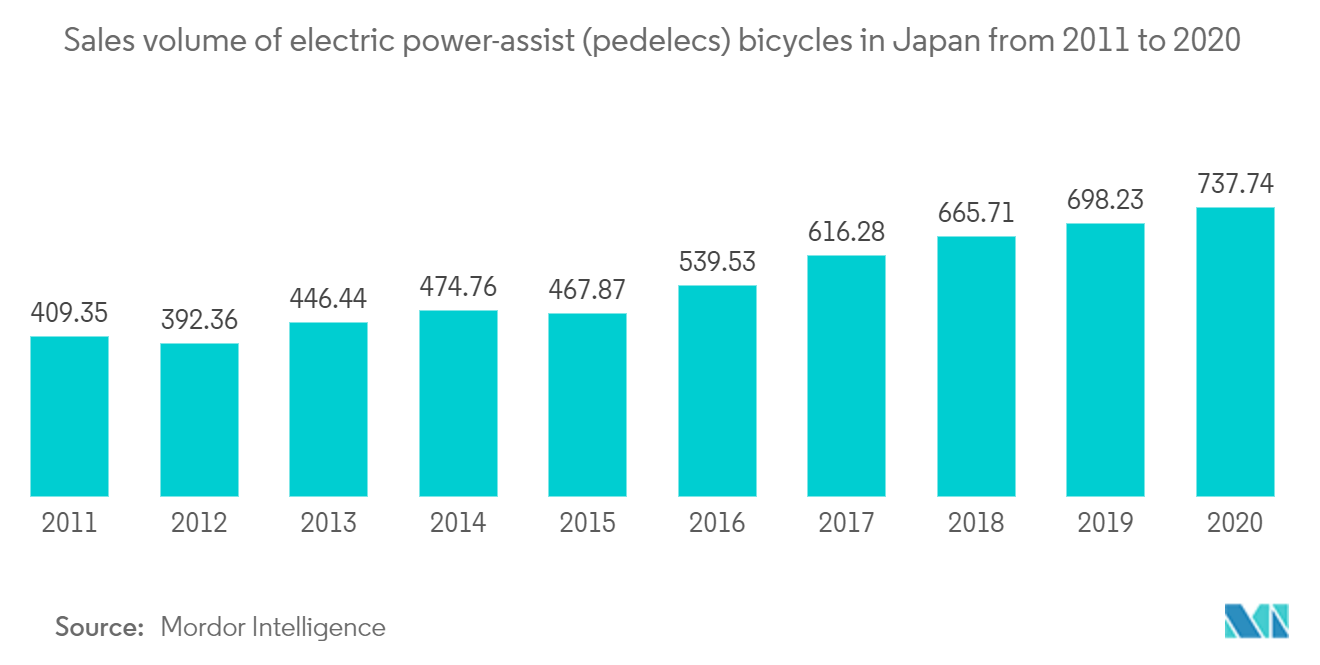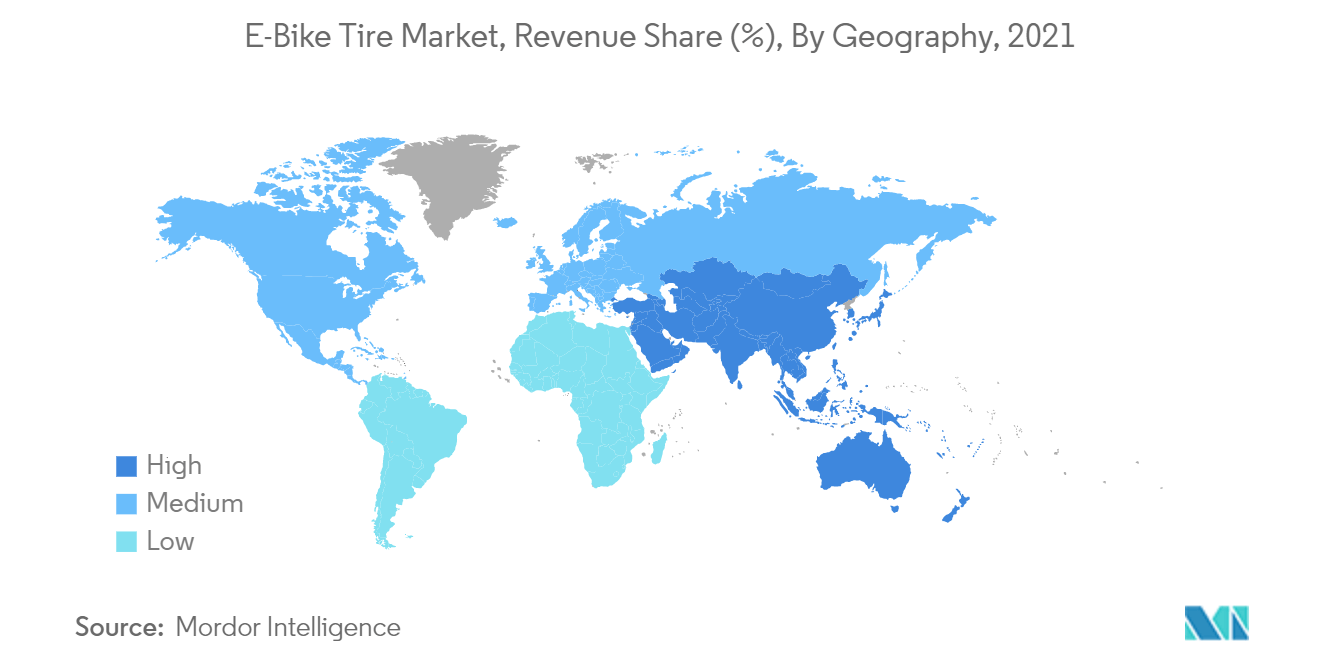Market Trends of E-Bike Tire Industry
This section covers the major market trends shaping the E-Bike Tire Market according to our research experts:
Rapid Adoption of E-Bike will Positively Impact the Target Market Growth During the Forecast Period
Rising government spending on bike-sharing programs, bike lanes, and more pedestrian-friendly streets as part of major initiatives to increase transportation options, improve road safety, and improve the environment are expected to increase consumer interest in e-bikes in the coming years. Growing concern about greenhouse gas emissions and meeting the demands of an increasing number of consumers are pressuring the industry to meet government and market demands for more sustainable products such as fat and large e-bike tires. Companies have been working with them every step of the way to help make those e-bike tires more efficient. As a result, tire manufacturers are developing fatter and larger tires. The most significant benefit of large-tire bikes is that they can be ridden in all weather conditions, and the bike will not slip on water or sink in snow or mud.
E-bikes stay in perfect balance with fat bike tires, requiring no extra effort when riding. So, the next time rider is stuck inside on a snowy day, make the most of it by taking a ride through their winter wonderland. A large tire bike is a cruiser that can take users through almost anything due to its adaptability to whatever situations they are in. Large tires were originally designed to ride over snow, but over time, they have evolved into heavy-duty tires capable of competing with mountain bikes. Across the country, major cities focus on building a safer bike infrastructure.
For instance, the Chicago Department of Transportation (CDOT) announced bike lane expansion throughout the city in September 2021. The department has spent approximately USD 17 million to install 100 miles of new and improved bike lanes. The Denver Department of Transportation planned to build 16 miles of protected and 19 miles of regular lanes by 2021. Riders benefit from safer and smarter connectivity owing to protected lanes.

NORTH AMERICA IS EXPECTED TO WITNESS A CONSIDERABLE SHARE IN TARGET MARKET
In North America, electric bikes are a versatile and eco-friendly way to get around. They are flexible and can be used in a variety of ways, making them a popular choice for people who want an environmentally friendly way to get around. Consumers look up to them as an alternative mode of transportation, such as scooters, cars, and public transportation. E-bikes are effective at tackling traffic congestion because they are smaller than traditional bikes and can go faster with less effort. They also have health benefits when you pedal. The aforementioned factors contribute to the increasing demand for electric bike tires.
One of the major concerns for governments and environmentalists in recent decades has been the increase in global carbon emissions from fuel combustion. This has the effect of increasing demand for electric vehicles in the United States and Canada, helping to bolster the growth of the market. Some e-bike manufacturers have introduced new models and expanded their manufacturing facilities throughout the country.
For instance, HOVSCO announced the release of five new electric bikes on the US market in May 2022, including three fat tire e-bikes (HovAlpha, HovAlpha Step-Through, and HovBeta), an electric commuter bike (HovRanger), an electric commuter bike (HovRanger). All new models include a Samsung/LG 48V/20Ah (or 15Ah) battery, a 48V 3A fast charger, and a 750W motor. In March 2022, Yamaha Motor Corp. USA introduced two all-new, class 3 power assist bicycles, the Wabash RT and the CrossCore RC. These e-bikes are designed from the ground up with a new Yamaha PWSeries ST drive unit, frame, and batteries internally integrated.
Electric bikes are becoming more popular in the United States and Canada due to the increase in fuel costs, pollution levels, and traffic congestion in urban areas. Several companies are partnering with organizations to make e-bikes more affordable by implementing programs. For instance, CalBike (California Bicycle Coalition) won the first round. CalBike is now collaborating with the California Air Resources Board to launch a program to assist California residents in purchasing e-bikes.


